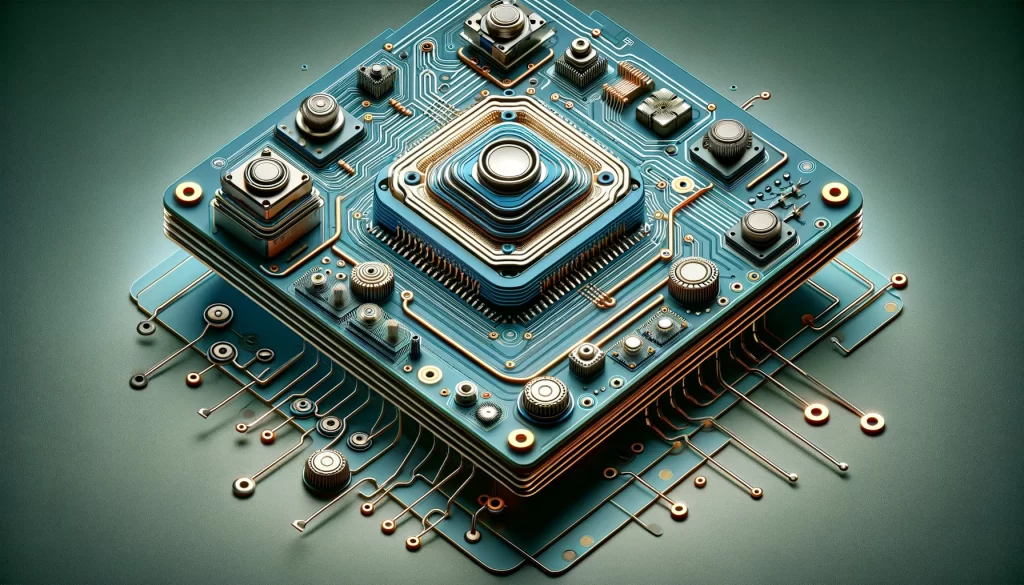Introduction
Hey there, product innovators and tech enthusiasts! Today, let’s chat about a game-changer in the world of user interfaces – polydome membrane switches. These nifty little switches are transforming how we interact with various devices, and here’s why they’re so fantastic.
What is a Polydome Membrane Switch?
Understanding the Basics: A polydome membrane switch, as the name suggests, uses a polyester dome to create a tactile response. Unlike traditional metal domes, these are formed from a layer of polyester material.
The Key Difference: Polydomes provide a unique feel compared to metal domes, offering a softer tactile sensation and a quieter operation.
Why Polydome Switches are Gaining Popularity
Cost-Effectiveness: One of the biggest draws of polydome switches is their cost advantage. They are less expensive to produce than metal domes, making them a go-to choice for budget-conscious designs.
Versatility in Design: Polydome switches are incredibly versatile. They can be easily integrated into various product designs, from medical devices to consumer electronics.
The User Experience Aspect
Tactile Feedback: The tactile response of polydome switches strikes a perfect balance between softness and firmness, offering a comfortable user experience.
Quiet Operation: Unlike the distinctive ‘click’ of metal domes, polydomes operate more quietly, making them ideal for environments where noise is a concern.
Durability and Reliability
Longevity: Polydome switches are known for their durability. They can withstand a significant number of presses without losing their tactile feel.
Consistency in Performance: These switches maintain their performance over time, providing consistent tactile feedback and reliable operation.
The Manufacturing Perspective
Ease of Manufacture: Polydome switches are simpler to manufacture than their metal counterparts. This simplicity translates to faster production times and fewer complexities in the manufacturing process.
Design Flexibility: Manufacturers love the flexibility that polydomes offer. They can be designed in various shapes and sizes, fitting seamlessly into different types of products.
The Environmental Edge
Eco-friendly Option: In an age where sustainability is key, polydome switches offer an eco-friendlier alternative. The materials and production process have a lower environmental impact compared to metal domes.
Applications and Real-World Use Cases
Wide Range of Applications: From household appliances to industrial controls, polydome switches are versatile enough to be used in a wide array of products.
Case Studies: We’ll look at some successful products that have leveraged the benefits of polydome switches, showcasing how they enhance user experience and functionality.
Case Studies: Successful Products Leveraging Polydome Switches
1. Consumer Electronics: Smart Home Control Panels
- Product Overview: A leading smart home device manufacturer integrated polydome switches into their control panels.
- Challenge: They needed an interface that was intuitive, quiet, and cost-effective.
- Solution: Polydome switches provided a quiet and soft touch, perfect for the home environment where noise reduction was crucial. Their cost-effectiveness allowed for high-quality production without inflating prices.
- Outcome: The control panels were well-received for their user-friendly interface, enhancing the overall user experience and leading to increased customer satisfaction and sales.
2. Medical Devices: Handheld Diagnostic Equipment
- Product Overview: A medical technology company developed a handheld diagnostic device for field use.
- Challenge: The device required a durable and reliable interface that could withstand frequent use and sanitization, all while being gentle to touch.
- Solution: Polydome switches were used for their durability and consistent tactile feedback, even under rigorous use and cleaning.
- Outcome: The equipment gained popularity among medical professionals for its reliability and ease of use, significantly improving field diagnostics.
3. Automotive Industry: In-Car Entertainment Systems
- Product Overview: An automotive company introduced a new in-car entertainment system with an integrated touch interface.
- Challenge: The interface needed to be user-friendly and resistant to frequent use, all while contributing to the vehicle’s aesthetic appeal.
- Solution: The company chose polydome switches for their sleek design and tactile response, enhancing the user interface’s look and feel without compromising on functionality.
- Outcome: The new entertainment system was praised for its seamless integration and user experience, setting a new standard in automotive interior design.
4. Fitness Equipment: Treadmill Consoles
- Product Overview: A fitness equipment manufacturer redesigned the consoles of their treadmills to enhance user interaction.
- Challenge: The consoles needed to be durable enough to withstand constant use in a gym environment and provide clear tactile feedback.
- Solution: Polydome switches were implemented for their robustness and distinct tactile sensation, ensuring users could operate the console easily even during intense workouts.
- Outcome: The treadmills were lauded for their improved usability and reliability, leading to positive reviews and increased sales.
5. Industrial Controls: Heavy Machinery Interfaces
- Product Overview: A company specializing in heavy machinery updated its control interfaces to improve usability and durability.
- Challenge: The controls had to be extremely durable and provide clear feedback through gloves and in noisy, harsh industrial environments.
- Solution: Polydome switches were used for their ability to provide noticeable tactile feedback and withstand tough conditions.
- Outcome: The updated machinery received positive feedback for improved operational efficiency and reduced user fatigue, enhancing safety and productivity.
Challenges and Solutions
Addressing Common Concerns: Like any technology, polydome switches have their challenges. We’ll discuss these and explore how current innovations are addressing them.
The Future of Polydome Switches
Innovation on the Horizon: The future looks bright for polydome membrane switches. Advancements in materials and manufacturing techniques are set to further enhance their performance and applicability.
Conclusion
Polydome membrane switches are a testament to how innovation in small components can significantly impact product design and user experience. Whether you’re a designer, engineer, or simply a tech enthusiast, understanding the benefits of polydome switches is crucial in the evolving landscape of product design.

